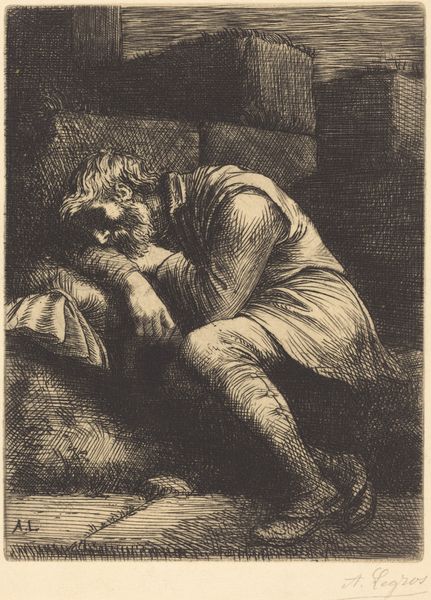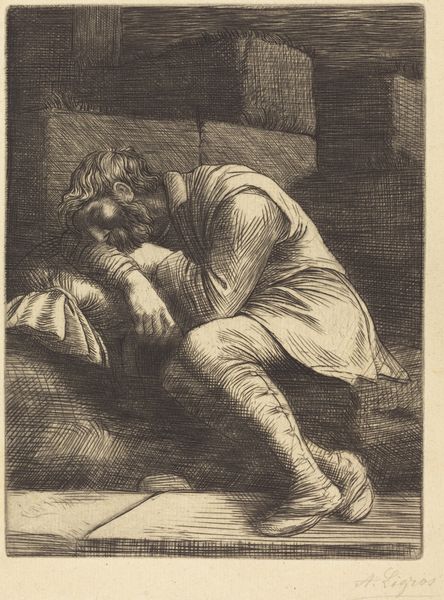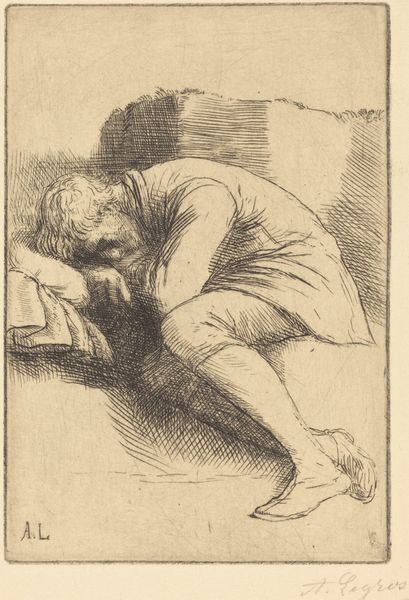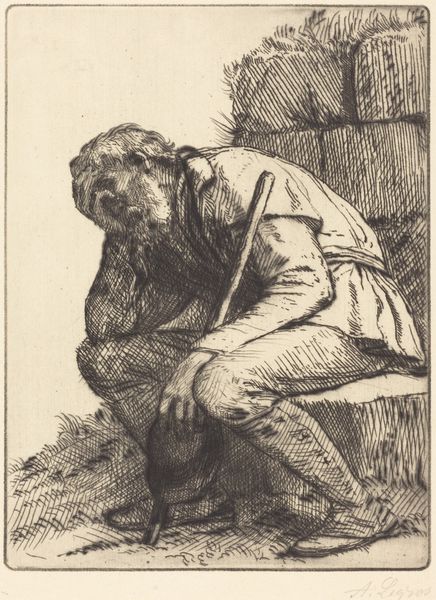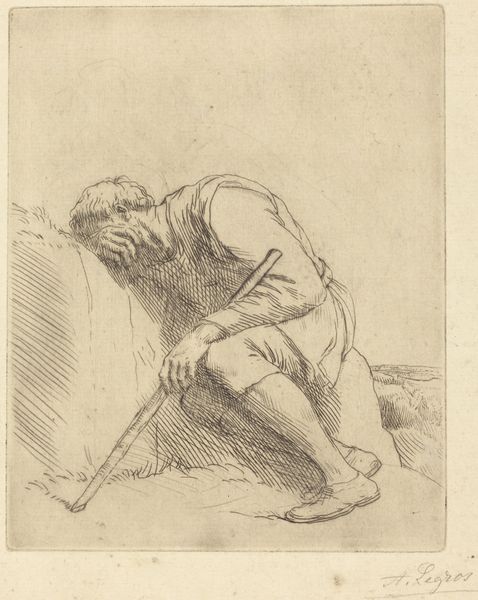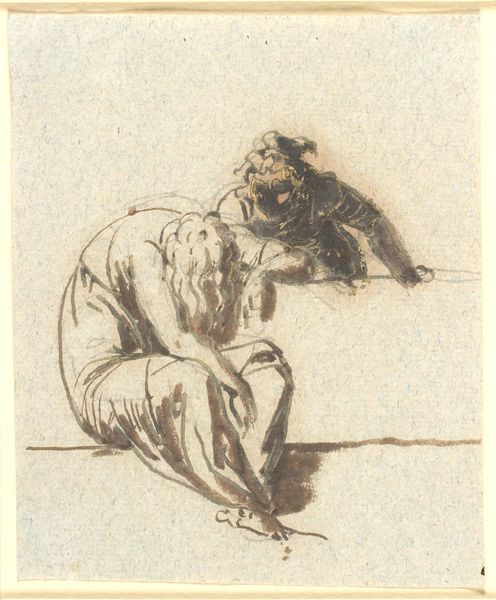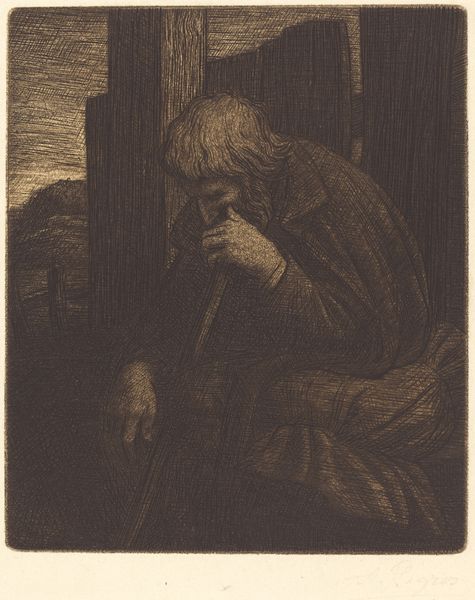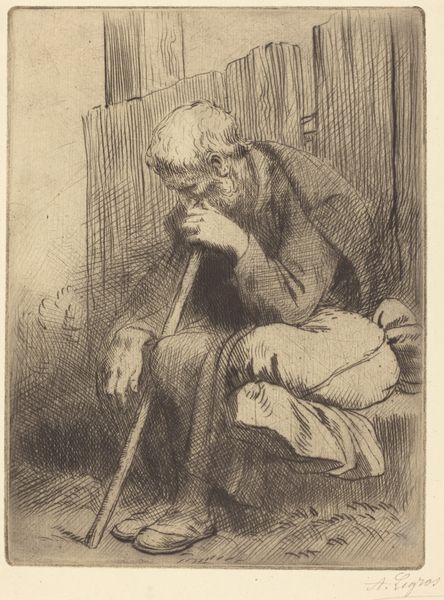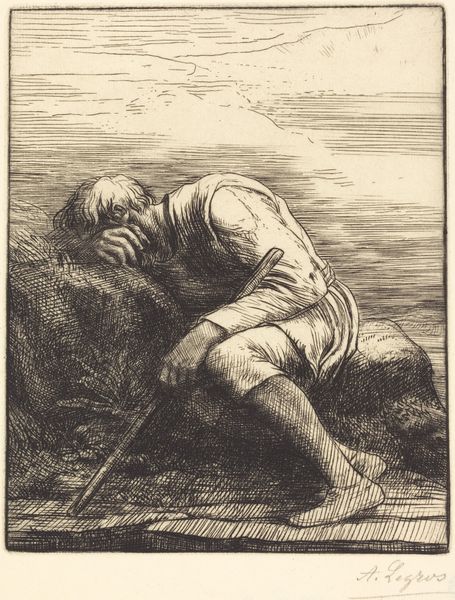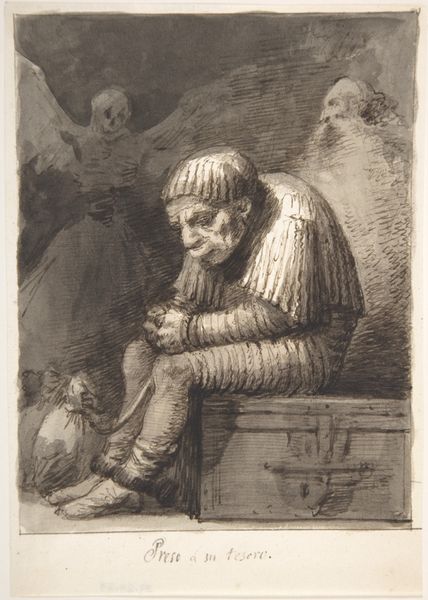
print, etching
#
portrait
#
narrative-art
# print
#
etching
#
genre-painting
#
realism
Copyright: National Gallery of Art: CC0 1.0
Curator: Alphonse Legros' "Sleeping Beggar," a somber etching, catches my attention. The dense, cross-hatched lines create an intense visual texture, but overall the piece evokes a feeling of exhaustion, both physical and spiritual, don’t you think? Editor: Absolutely. The figure is so compelling in his repose; I am instantly drawn to the rough materiality, and the printmaking process feels integral to the subject. The visible marks are like calluses of labor—traces of effort impressed directly onto the paper. Curator: Legros was quite interested in Realism and the representation of everyday life, particularly focusing on the working classes. I wonder if you would say that’s how the medium supports his broader social commentary? Editor: Precisely. Legros selected etching because it made prints accessible and reproducible—echoing a wider effort during that period to produce democratic art. But I am very much concerned by the conditions by which those democratic ends were reached: Were Legros’s assistants similarly pushed beyond exhaustion to reproduce his work? To what extent does this representation also rely upon invisible labor? Curator: That's a compelling point. I read this beggar as a symbol of broader societal neglect. Perhaps this particular kind of attention to materiality—which is a reflection of our current labor conditions—was not part of the awareness and the social structures of Legros's time. His focus, in alignment with other Realists, appears on one level at least to indict indifference by visually centering a marginalized figure within an art world accustomed to looking away. Editor: But by making the poor an object of aesthetic contemplation, doesn't it risk reifying inequality—aestheticizing what is essentially exploitation and suffering, like what he did in this “Sleeping Beggar?” The man’s fatigue becomes…beautifully rendered. Is there perhaps a need for awareness about issues of power—who is granted the agency to represent whom? Curator: Indeed, a difficult tension. It certainly begs the question: Can an artwork intended to critique power dynamics end up subtly reinforcing them, if, as you say, it doesn’t adequately scrutinize its own position and means of production? Legros definitely leaves us wrestling with the ethics of representation itself. Editor: Exactly, I am compelled by how your activist eye seeks to scrutinize historical context; your approach urges critical engagement and demands a responsible awareness of how visual art becomes embedded with power structures, from the materials chosen to the reception of this “Sleeping Beggar” and its maker today. Curator: Thank you! Likewise, your perspective powerfully illuminates the tangible world behind artistic production. Ultimately, Legros gives us a potent image that’s about seeing and thinking beyond what meets the eye.
Comments
No comments
Be the first to comment and join the conversation on the ultimate creative platform.
